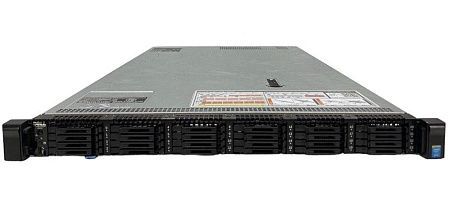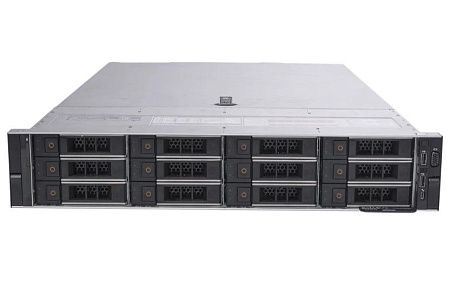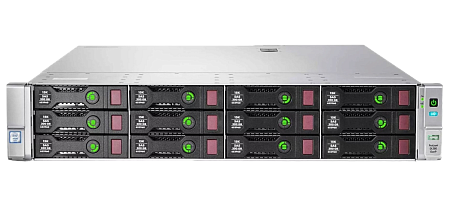For the accommodation and organization IT equipment in the data centers specialized inventory is used – the server racks and the server cabinets. What they are, how they use and what they made of – it will be described in the presented article.

Server cabinet vs Server rack
The mounting rack (the server rack). Advantages and disadvantages
The server rack is a rack used to install a server, a computer, the telecommunications equipment, the cables and patch cords in such a way that their placement conditions are optimal for normal operation. Also, the server racks provide convenience and simplicity of service of the placed equipment.
The server racks could have one- or two-frame design. As a rule, the single-frame racks used for the telecommunications equipment. The double-frame racks used for the network equipment. For connecting the various types of equipment they use the optical cross-countries and patch cords.
The standard mounting racks have a 19-inch front panel (including the edges or the lugs used to a mount equipment). The racks are also available in 23" and 24" widths in the various heights and depths for more compact IT equipment and higher cable density.
The height unit for such equipment is a unit (U, sometimes also called a Rack Unit or RU) corresponding to 1.75 inches. So, for a standard 19-inch rack, one U-space represents a group of three holes cut into it.
Core advantages of mounting racks include:
- low price - an open rack is cheaper than a rack cabinet of a similar size;
- good equipment cooling provided by free passage of air flow;
- easy access to equipment when it needs to be repaired or replaced.
Disadvantages of server racks are the low level of a protection of the rack-mounted devices from strangers and a high risk of equipment contamination with the dust and debris.
The telecommunication cabinet (the server cabinet). Advantages and disadvantages
The server (telecommunications) cabinet is a server rack closed with the side panels and doors in the front and in the behind. At the same time, the doors and the side panels can be perforated for better ventilation of the equipment and the front door can be made of a plexiglass with a locking system. Standard dimensions for a data center server cabinet are 73.5 inches high, 23.6 inches wide, and 31.5 inches deep.
Network cabinets used to the install servers, routers, switches, fiber optic patch panels, and other network equipment in general. For better cooling, a fan unit could be installed on the top.
The server cabinets should be with the following requirements:
- have both doors ventilated (without it, the devices inside will not be able to fully cool);
- have an optimal load capacity (up to 1.5 tons for expensive models and 400-450 kg for cabinets with a simple design);
- have a certain defined distance between the profiles holding the products and the frame. That is necessary for correct installation of the switching systems;
- be equipped with the wide cable channels and a sufficient number of the sockets combined into a common ground loop;
- have the supports for installing the cabinet in a horizontal position
Unlike the mounting racks, the server cabinets are more secure – the walls and the doors prevent unauthorized persons from accessing the equipment, and the cables are better protected from a dirt and from a damage. Also, the various air separation strategies could be applied to the telecommunications cabinets, such as a cold aisle containment, hot aisle containment, and the cabinet level protection.
In addition, compared to a rack, the cabinet is significantly more expensive. Due to the limited access, more time is required to operate or maintain the equipment in the cabinet.
How iron is equipped
The standard server rack includes:
- adjustable prop designed for a precise and even adjustment of a position and distance to the floor. The racks are divided into two- and four-support;
- anti-slip Anti-Tip stabilizers providing stability for the structures with weight is in the range since medium to heavy;
- wheels fixed at the bottom of rack and facilitating its movement around the room. If it is necessary to install a rack in one place, the wheels could be blocked;
- mounting rails (or rails) - two vertical plates of aluminum or steel with round (EIA standard) or universal rectangular holes designed for mounting equipment - network and computer. The cantilever racks could also be installed on the mounting rails and designed for a such equipment that is difficult to mount directly on rail. The choice of mounting rails depends on the type of equipment.
The server cabinets, in addition to the listed components, consist of:
- front doors in steel (with or without perforation, with plexiglass insert), or in thermoplastic plexiglass in an aluminum frame, and rear doors;
- top panels - ventilated, both with the slots for cable routing or ventilation, and without;
- side panels - solid fixed, solid removable, louvered or plugs.
In addition, the server cabinet includes a fan circulates air and maintains the temperature that is optimal for operation of the equipment. The fan mounts in the top panel of the cabinet and helps to remove heated air from it.
Additionally, an inventory for placing IT equipment is equipped with the baseboards to protect electrical wiring, the patch panels, the fiber optic panels and extensions, the organizers and cable hooks for proper organization of electrical installation in the server rack or cabinet, the auxiliary shelves, the drawers and panels.
Variety of the racks and cabinets
For the most efficient placement of network or communication equipment, you can choose the most suitable model from the several types of cabinets and racks:
- all-welded - rigid non-separable structures designed for a significant weight of server equipment;
- collapsible frame - easy to install, made on the basis of a two-frame carcass that could withstand a significant load;
- rack structures – formed from four vertical racks. They withstand small in size and light switching equipment with a mobile function.
In addition, the server cabinets and racks divided into:
- standing (floor) - designed to accommodate a large number of devices in the server rooms and data centers providing the server space rental services. Such rooms adapted to the high loads, power consumption and adequate cooling and heating, the use of floor cabinets is an optimal solution;
- hanging cabinets and racks used wherever the floor space used for other purposes - especially for the smaller projects with a small amount of compact and lightweight equipment. Such structures hung on anchor bolts.
During the choosing a design for the installation of server equipment, it is recommended to pay attention to: mobility or stationarity of a model; suitable type of construction; height in the units corresponding to the height of devices installed inside (18U, 22U, 32U, 42U); installation method - installation on the floor or hanging on the wall; type of door: made of plexiglass (helps to monitor the operation of devices), made of iron (reliably protects), perforated (effectively ventilates); type and quality of ventilation.
What is still better: the server cabinet or a rack?
Installing a server and all associated equipment in a rack allows to solve the several important problems at once: firstly, to save space in a server room, secondly, to ensure ease of administration and, thirdly, to eliminate an appearance of vibration during equipment operation, and thus reduce a risk its breakdown.
However, an open framed rack provides only minimal physical protection to the server. So, the air-conditioned server cabinet is a good choice for the complete equipment rooms. Installation of the such systems should be carried out in the rooms with blank walls without windows and providing free access to the network equipment.
Specialists of our company are ready to help you purchase the server and select the necessary server configuration for any required task.
















































